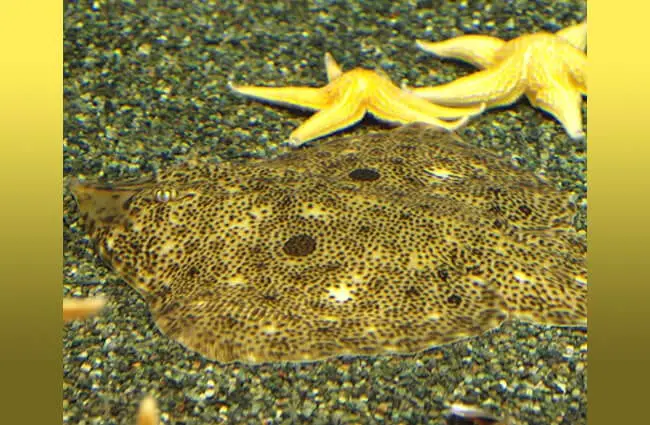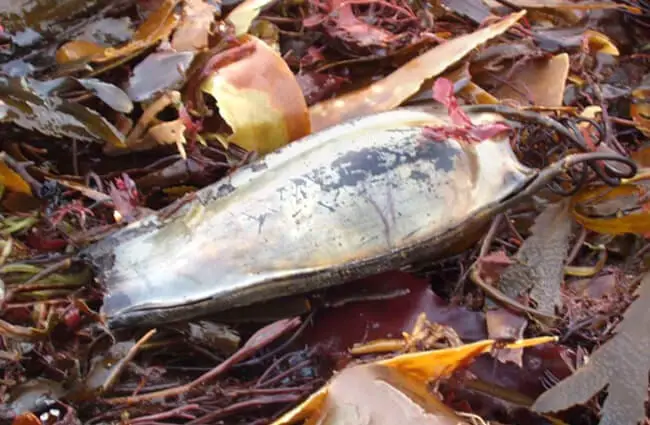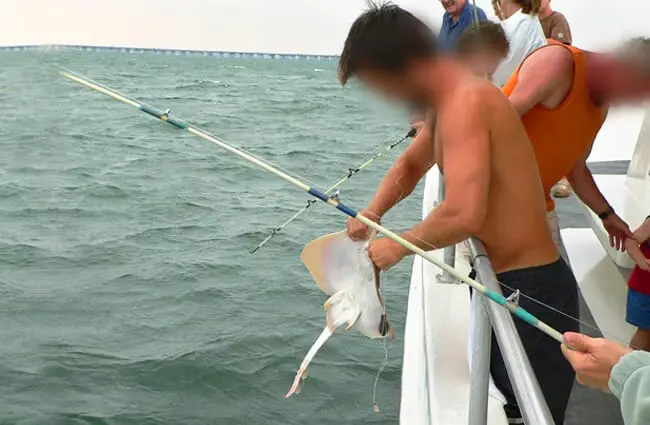What is a Skate? An Introduction to These Fascinating Fish
Skates are a group of cartilaginous fish closely related to sharks and rays, but possessing a unique charm and lifestyle all their own. Often overlooked, these bottom‑dwelling creatures play a vital role in marine ecosystems. This guide delves into the world of skates, exploring their biology, behavior, habitat, and their interactions with both the environment and humans. Whether you are a seasoned zoologist, an avid animal lover, or simply curious about the ocean’s inhabitants, this article offers a comprehensive look at these intriguing fish.

Understanding Skate Biology
Skates belong to the superorder Batoidea, which also includes rays. While both groups have flattened bodies and pectoral fins fused to the head, skates typically possess a fleshy tail with two distinct lobes and one or more spines, whereas rays usually have a whip‑like tail and often lack spines. Skates lay eggs in leathery, rectangular capsules that are sometimes referred to as “mermaid’s purses.” In contrast, many rays give birth to live young, although a few ray species are also oviparous.
Anatomy and Physical Characteristics
The skate’s body is designed for life on the seabed. Its flattened shape and broad pectoral fins allow it to glide effortlessly over the ocean floor. The skeleton is made of cartilage rather than bone, providing flexibility and reducing weight. Skates have placoid scales—tiny, tooth‑like structures that provide protection. Eyes are located on the dorsal surface, and a spiracle—a small opening behind the eye—allows them to draw water over their gills when buried in sediment.
Skate Habitat and Distribution
Skates are found in oceans around the world, from the frigid waters of the Arctic and Antarctic to warm tropical seas. They inhabit a variety of marine habitats, including shallow coastal areas, deep‑sea trenches, and estuaries. Most species are benthic, meaning they live on or near the seafloor. Different species have different habitat preferences, influenced by factors such as water temperature, salinity, and food availability.
Common skate habitats include:
- Rocky reefs: Provide shelter and foraging grounds.
- Sandy and muddy bottoms: Offer a place to bury and ambush prey.
- Estuaries: Serve as nursery grounds for juvenile skates.
- Deep sea: Home to specialized species adapted to extreme pressures and darkness.
Diet and Feeding Behavior
Skates are primarily carnivores, feeding on a variety of invertebrates and small fish. Their diet includes crustaceans such as crabs and shrimp, mollusks like clams and squid, and bony fishes. They locate prey using electroreceptors that detect the electrical fields generated by other animals. Skates are ambush predators, often lying camouflaged on the seabed and waiting for prey to come within striking distance.
They have powerful jaws and crushing plates in their mouths, enabling them to break open the shells of hard‑bodied prey. Some species also ingest sediment while feeding, extracting digestible material before expelling the waste.

Skate Reproduction and Life Cycle
Skate reproduction is a fascinating process. Skates are oviparous, meaning they lay eggs. The eggs are encased in leathery, rectangular capsules known as “mermaid’s purses.” These capsules have tendrils or horns that help them attach to seaweed, rocks, or other substrates. A single skate can lay dozens or even hundreds of egg cases during its lifetime.
The eggs develop over a period of several months, depending on the species and water temperature. Once hatched, the young skates are miniature versions of the adults and are immediately independent. They grow slowly and can live for many years, with some species reaching ages of over 50 years.
Skates and the Marine Ecosystem
Skates play an important role in maintaining the health of marine ecosystems. As predators, they help to control populations of invertebrates and small fish. They also contribute to nutrient cycling by consuming prey and releasing waste products. Their feeding activities can stir up sediment, creating habitat for other organisms.
Skates, in turn, serve as prey for larger predators such as sharks, seals, and marine birds. Their egg cases provide habitat for small invertebrates. Skates also interact with humans through fisheries and recreational activities.

Skate Evolution
The evolutionary history of skates, like other cartilaginous fish, stretches back over 400 million years. Early skates likely resembled sharks more closely, with a more streamlined body and a larger tail. Over time, they adapted to a bottom‑dwelling lifestyle, developing a flattened body, broad pectoral fins, and a specialized tail for maneuvering on the seabed. Fossil evidence suggests that skates were once much more diverse than they are today, with a variety of extinct species exhibiting unique adaptations.
Skate Interactions with Humans
Human activities have a significant impact on skate populations. Skates are often caught as bycatch in fisheries targeting other species, such as shrimp and groundfish. They are also targeted directly for their meat, liver oil, and skin. Overfishing and habitat destruction are major threats to many skate species, leading to population declines and even local extinctions.
However, there is growing awareness of the importance of skate conservation. Efforts are underway to reduce bycatch, establish marine protected areas, and implement sustainable fishing practices. Public education is also crucial for raising awareness and promoting responsible stewardship of these fascinating creatures.

Encountering Skates in the Wild
If you encounter a skate while diving or snorkeling, it is best to observe it from a respectful distance. Avoid touching or disturbing the animal, as this can cause stress. Remember that skates are wild animals and should be treated with caution. Do not attempt to feed or handle them, and be mindful of their habitat.
Skate Care in Captivity
Caring for skates in captivity requires specialized knowledge and facilities. Skates need large tanks with sandy or muddy substrates, strong filtration systems, and appropriate water temperature and salinity. They require a diet of fresh or frozen seafood, and their tanks must be regularly cleaned to maintain water quality. Providing adequate space and enrichment is crucial for their well‑being.

Interesting Skate Facts
- Skate egg cases, or “mermaid’s purses,” are often found washed up on beaches.
- Skates have a highly developed sense of smell that helps them locate prey.
- The largest skate species, the giant oceanic skate, can reach lengths of over 2.5 meters.
- Skates play a vital role in maintaining the health of marine ecosystems.
Conclusion
Skates are truly remarkable creatures, deserving of our admiration and protection. From their unique anatomy and reproductive strategies to their important role in marine ecosystems, these fascinating fish have much to offer. By learning more about skates and supporting conservation efforts, we can ensure that these ancient creatures continue to thrive for generations to come.

![Red Angus Closeup of a beautiful Red Angus cowPhoto by: U.S. Department of Agriculture [pubic domain]https://creativecommons.org/licenses/by/2.0/](https://animals.net/wp-content/uploads/2020/03/Red-Angus-4-238x178.jpg)




![Red Angus Closeup of a beautiful Red Angus cowPhoto by: U.S. Department of Agriculture [pubic domain]https://creativecommons.org/licenses/by/2.0/](https://animals.net/wp-content/uploads/2020/03/Red-Angus-4-100x75.jpg)

